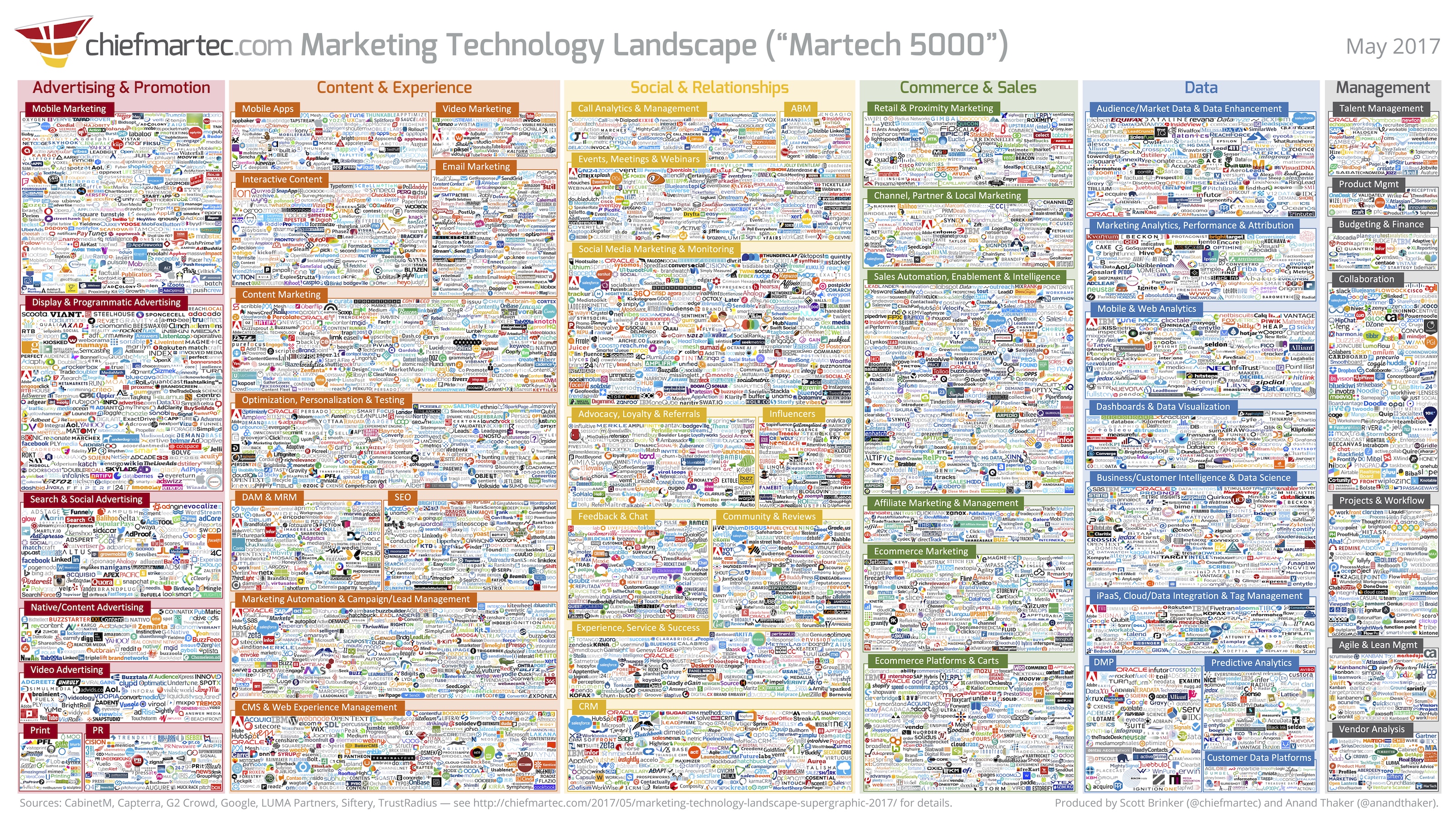Creating a Marketing Strategy is easy, creating an effective marketing strategy is a challenge. This is because marketing is different. It has exploded. Looking at the state of marketing, the landscape has become cluttered beyond comprehension. Even in comparison with one year ago.

Evidence of this is from the 2017 ChiefMarTech.com landscape graphic. It is huge and 40% more full than last year’s. In 2016 there were 3,900 brands featured – if that was not enough tools and services to get your business fired up, 2017 seems to benefit from nearly 1,400 more.
Why?
Seriously, why? Is there really enough business to go around?!
There are products that allow you to do everything from personalise, automate, geo-target and enable through to feedback. If you squint hard enough, there might be one magic unicorn that will do all this for you. It begs the question where do you start?
For business owners and those responsible for generating new business, the array of services available is blinding. For the 650,000+ businesses that were started in 2016, how do they see through the showboating and identify what is useful to them? Where do they start to market? I believe the answer is in a person-first marketing strategy.
What is a person first marketing strategy?
I think this means that you should forget about tools and technologies to start with and focus on people.
If you start collecting some basic information about your customers, you can begin to create an effective strategy. Ideally, you should capture valuable insights: where customers came from, what language they used to find you or that they responded to when making the enquiry, how long did they take to buy, what did they buy and at what price…? A people-first strategy.
If you know your audience – and remember that ultimately it is a person, if you know them, you can build your marketing strategy around a person.
The real success of any marketing strategy is based upon your understanding of your target customer. The more that you know them (albeit based upon your knowledge of your existing customer), the more you are able to shape your marketing activities.
